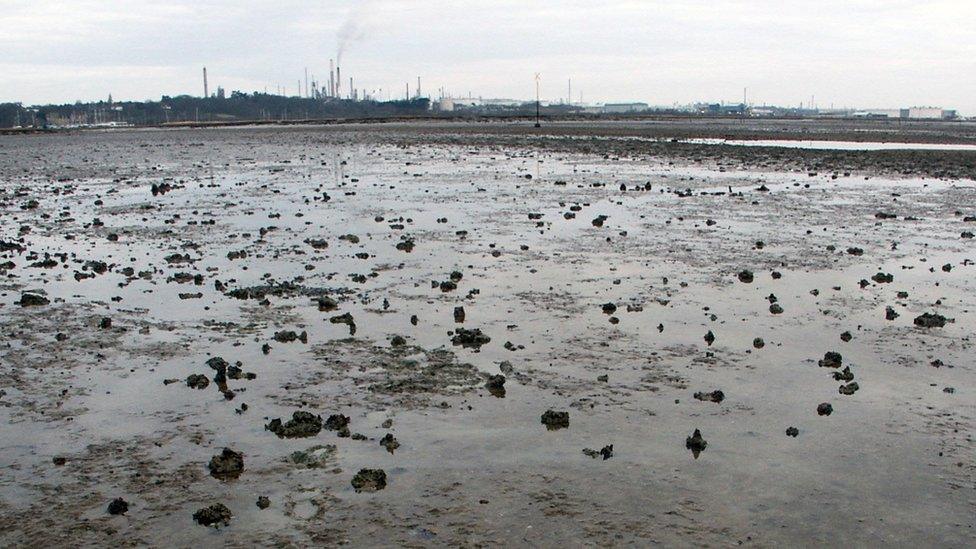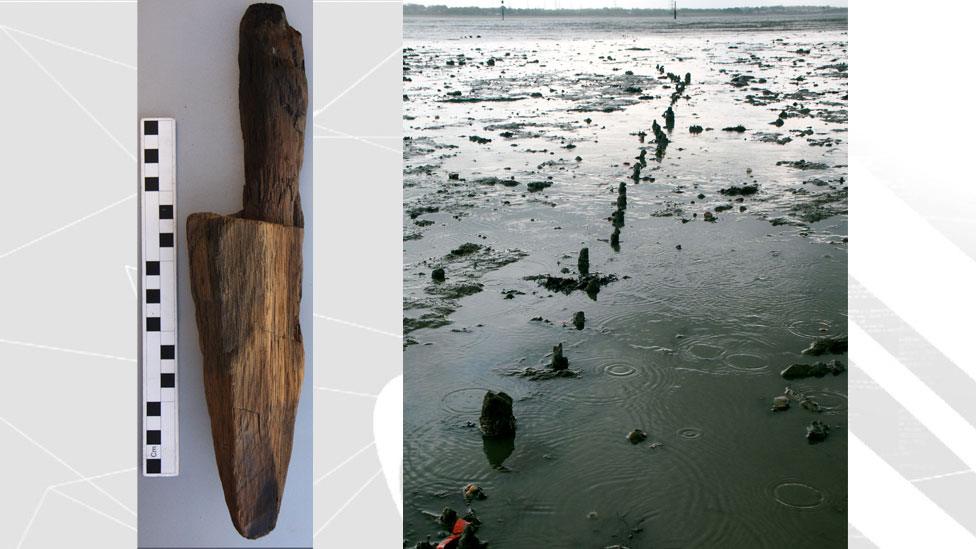Southampton Water fish trap dated to Saxon times
- Published

The trap was found by chance close to the Fawley oil refinery by archaeology students more than 10 years ago.
A timber fishing trap exposed on the Hampshire coast dates back to Saxon times, it has been confirmed.
The weir, built as a permanent wooden structure to catch fish as the tide ebbed, was found by chance on the shore of Southampton Water in 2005.
Radiocarbon dating has shown it was built in the 8th or 9th centuries.
Experts from Exeter University said the results were "thrilling" and provided new insights into the process of coastal erosion in the area.

Radiocarbon dating of the timbers shows it was built in the 8th or 9th centuries
The 70m-long (500ft) structure was found by chance close to the Fawley oil refinery by archaeology students more than 10 years ago.
Tests showed the structure was built between 680AD and 896AD.
Marine archaeologist Dr John Cooper said the discovery has allowed historians to map changes to the shoreline over 1,000 years as it was covered by advancing saltmarsh which later retreated, gradually exposing the structure over the past century.
"It has highlighted the level of erosion in Southampton Water over the last few decades. There are factors like sea level rise and dredging carried out but it shows how dynamic coastal change is."
He said the wooden structures, once exposed are vulnerable to shipworm and are likely to continue erode away.
Some of the posts and wickerwork have already vanished since the initial find in 2005.
- Published29 January 2017

- Published29 November 2016
